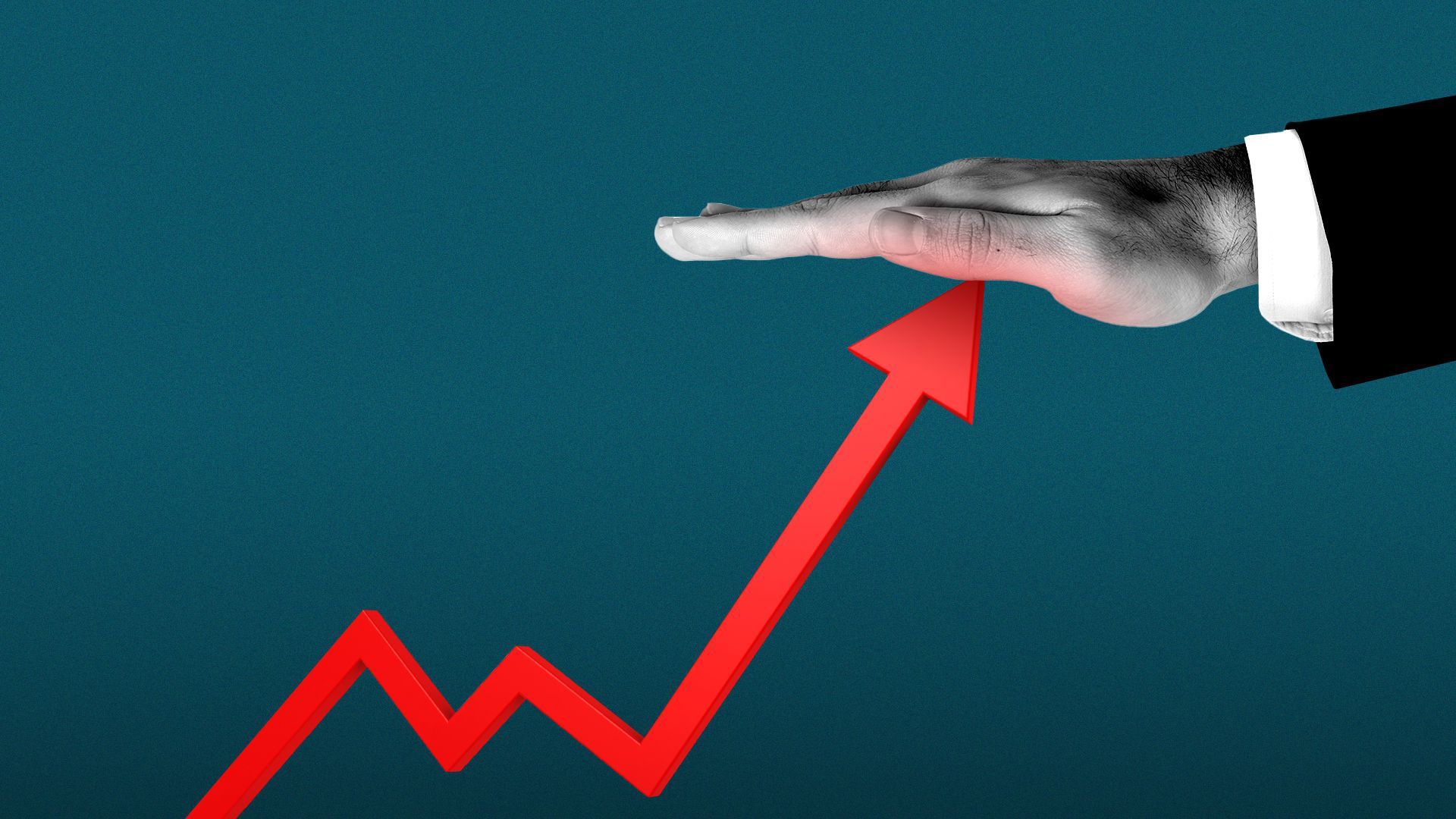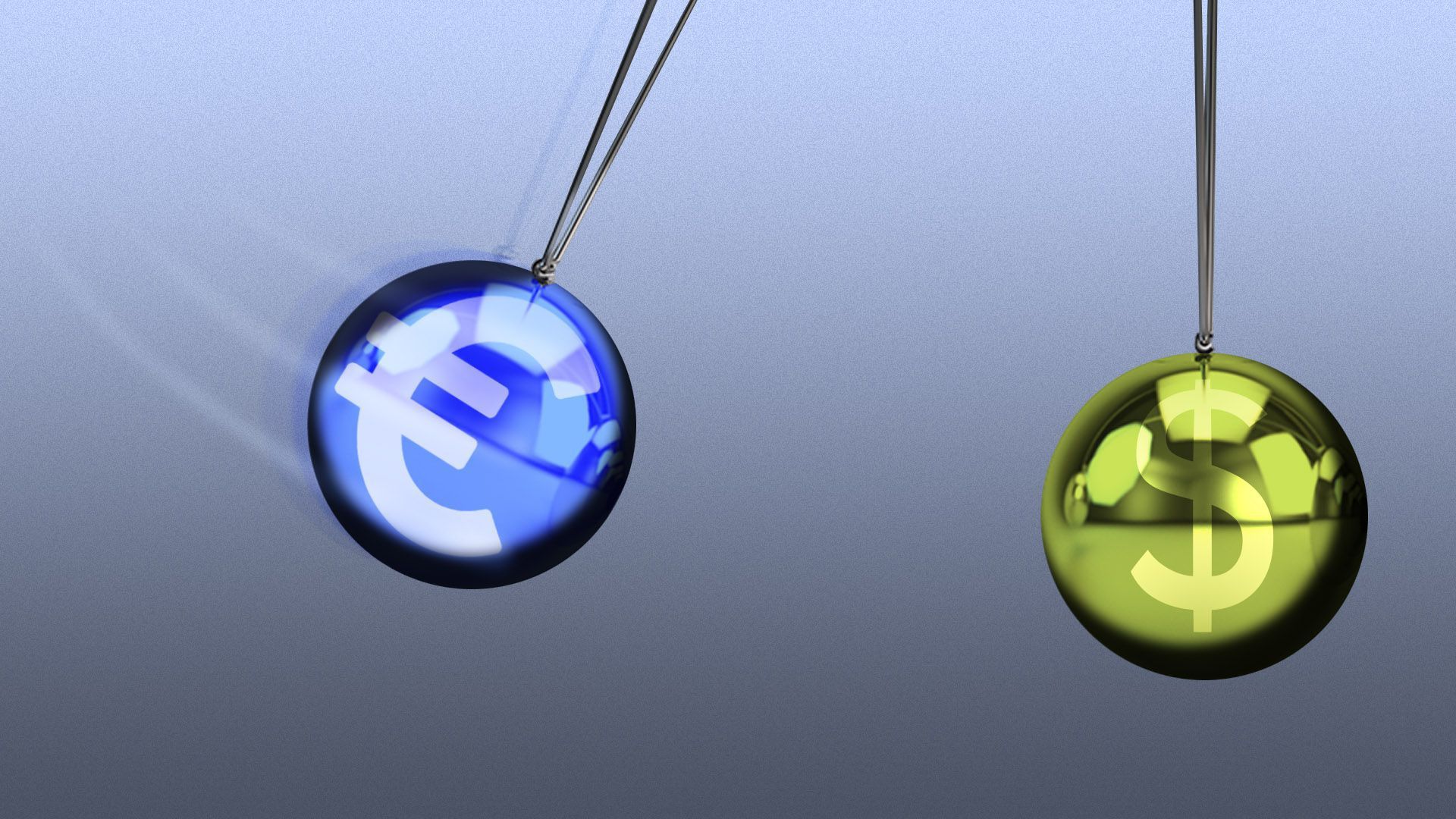| | | | | | | | | | | Axios Markets | | By Matt Phillips and Emily Peck · Aug 19, 2022 | | Hot dog! Happy Friday ... Let's roll into the weekend strong. Today's newsletter, edited by Kate Marino, is 1,009 words, 4 minutes. | | | | | | 1 big thing: Inflation slowdown ahead |  | | | Illustration: Annelise Capossela/Axios | | | | It's easy to get owned as an out-of-touch econ geek if you dare to say this — as my colleague Neil Irwin can attest! — but last year's runaway rise in prices looks like a thing of the past, Matt writes. Why it matters: Unstoppable inflation was the key risk facing investors over the last year, as it would result in sharply higher Fed rate hikes, and the very real chance of a recession — both of which could squash stock prices. Driving the news: Lately, products that posted some of the most notable price surges last year have seen slumping prices. - Lumber: Soaring wood prices were on the leading edge of 2021's inflationary run-up, and even early this year they were still surging. They're now down about 60% since March.
- Used cars: Icarus-like used vehicle prices — driven by a shutdown of new production due to COVID — were a key driver of inflation in 2021. They're basically flat this year, with leading indicators suggesting a relatively sharp turndown in prices from July to August.
- Oil: Even before the war in Ukraine ignited a global energy crisis, prices for petroleum and gasoline were up markedly. But since crude oil prices topped out at over $120 a barrel in March, they're down more than 25%.
- Real estate: The key price category to watch for inflation is housing, which accounts for a massive share of the Consumer Price Index. Even there, a pronounced downtrend in prices has started to emerge.
- We could go on: steel, grains, gasoline, cobalt, eggs. They're all falling.
- Oh, and the cost of time, in the form of supply chain snarls, is also easing, as constraints on shipping are quickly getting back to the pre-crisis normals. (See the next item, below.)
Reality check: Just because prices are falling, doesn't mean things are cheap. - Overall prices are much higher than before COVID-era inflation hit.
- Broadly speaking, prices aren't going back to the before times. Ever.
The bottom line: Still, from a straightforward stock market perspective, this is all pretty good news, if it keeps up — as it means the Fed may not have to generate a Volcker-style rate shock. - Of course, there's always the chance that some demonic mutation of COVID emerges and we're back to square one. But let's keep our fingers crossed.
|     | | | | | | 2. ⛓ The supply chain is maybe fixed? |  Data: RSM US; Note: The RSM index is compiled using data that includes inventories, delivery times, prices paid and freight traffic, among others; Chart: Nicki Camberg/Axios To say the supply chain is completely fixed may be an overstatement — but an index, produced by the economics group at consulting firm RSM, suggests that's where we're heading, Matt writes. Why it matters: The chart above, along with a range of other indicators, has shown a significant improvement in the backlogs, delays and general unpredictability of doing business amid the economic recovery from the pandemic. How it works: This is an index, which means it synthesizes a bunch of different supply chain-related data from various government and private industry economic reports — and combines it all into a single number. - Inputs into the index include everything from inventories at retailers to freight traffic readings to job vacancies and delivery time readings.
Of note: Tracking these things is something of an art, not a science. Other supply chain indexes — like one from the New York Fed — also show great improvement, though not quite "back to normal" territory. The bottom line: "This will cause a further easing in inflation and bolster overall growth in the current quarter," says Joseph Brusuelas, chief economist at RSM U.S., of the improvements in the supply chain. |     | | | | | | 3. Catch up quick | | 📈 Fed officials send mixed signals on size of September rate hike. (Bloomberg) 📆 Traders are watching for signs of volatility, as $2 trillion in stock options expire today. (Bloomberg) ⬇️ PwC report says half of U.S. companies plan to reduce their employee headcounts. (Yahoo Finance) |     | | | | | | A message from Axios | | Smart Brevity® guidance is transforming comms at 300+ organizations | | |  | | | | Axios HQ's AI-powered editing help combines writing tips from Axios' top writers — and a format proven to boost reader engagement — to help you send scannable updates that are 40% shorter than most work emails. Learn more | | | | | | 4. ECB on CBDCs |  | | | Illustration: Sarah Grillo/Axios | | | | Much of the talk about central bank digital currencies (CBDCs) often focuses on how these digital coins would impact consumers — and the federal government's ability to carry out monetary and even legislative policy, Axios Crypto's Brady Dale writes. - Another important cohort: banks.
Driving the news: The European Central Bank released a new working paper on CBDCs this week, highlighting, among other things, how the presence of sovereign digital currencies could fundamentally alter the banking industry as we know it. Why it matters: Experimentation with CBDCs is underway globally — even the Fed has been studying and experimenting. - A digital dollar, for instance, would be legal tender, just like a paper dollar in your physical wallet.
State of play: The ECB paper notes that CBDCs would be very likely to decrease bank deposits somewhat, as certain users choose to just hold digital cash rather than entrust it to a bank. - In short: People put money in banks so it's accessible for payments and it's safe. If a person can accomplish the same thing another way — with less red tape and no counter-party risk (bank failure) — why wouldn't some people choose to do that for at least some money?
- The impact: This would diminish credit available from banks — but it could also induce them to increase interest rates for depositors.
Worth noting: If banks were less instrumental to the payment system, central banks wouldn't need to worry so much about protecting them, in the "too big to fail" sense. - "Banks become less special," the authors write.
|     | | |  | | | | If you like this newsletter, your friends may, too! Refer your friends and get free Axios swag when they sign up. | | | | | | | | 5. Japan says: "Have a drink" |  | | | Buy the bottle. Your country will thank you. Photo: Behrouz Mehri/AFP via Getty | | | | The Japanese government has a problem on its hands: Young people aren't drinking enough alcohol, Axios World's Dave Lawler writes. By the numbers: In the good old days of higher booze consumption (1980), alcohol taxes accounted for 5% of government tax revenues. That fell to under 2% by 2020, per The Guardian. What they're saying: "Many people may have come to question whether they need to continue the habit of drinking with colleagues to deepen communication," an official at the National Tax Agency told the Japan Times. - The kicker: "If the 'new normal' takes root, that will be an additional headwind for tax revenue."
To help plug the gap: The tax agency has launched a competition for ideas to help ... promote drinking. |     | | | | | | A message from Axios | | Smart Brevity® guidance is transforming comms at 300+ organizations | | |  | | | | Axios HQ's AI-powered editing help combines writing tips from Axios' top writers — and a format proven to boost reader engagement — to help you send scannable updates that are 40% shorter than most work emails. Learn more | | | | ✉️ Was this forwarded to you? Sign up here for a daily dose of Axios Markets! Thank you, Mickey Meece, for copy editing this newsletter today, and every day. |  | | Why stop here? Let's go Pro. | | | | | | Axios thanks our partners for supporting our newsletters. If you're interested in advertising, learn more here.
Sponsorship has no influence on editorial content. Axios, 3100 Clarendon Blvd, Arlington VA 22201 | | | You received this email because you signed up for newsletters from Axios.
Change your preferences or unsubscribe here. | | | Was this email forwarded to you?
Sign up now to get Axios in your inbox. | | | | Follow Axios on social media:    | | | | | |











No comments:
Post a Comment